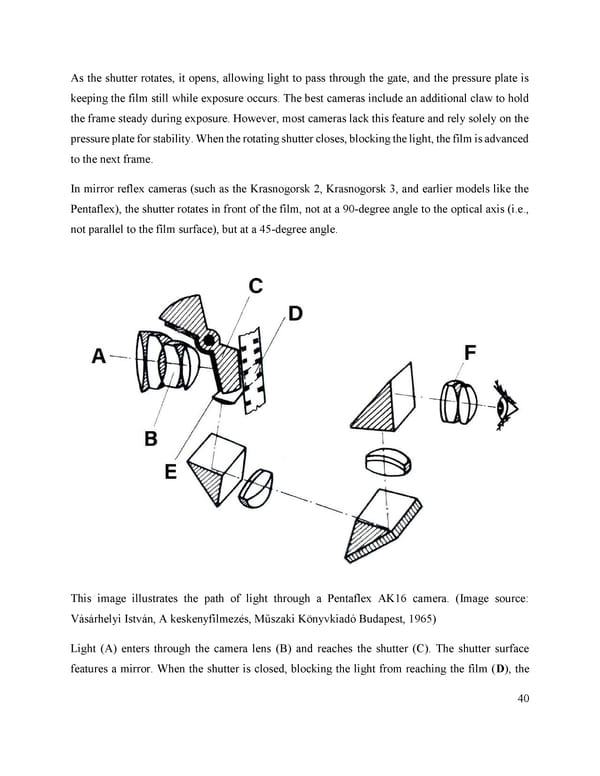As the shutter rotates, it opens, allowing light to pass through the gate, and the pressure plate is keeping the film still while exposure occurs. The best cameras include an additional claw to hold the frame steady during exposure. However, most cameras lack this feature and rely solely on the pressure plate for stability. When the rotating shutter closes, blocking the light, the film is advanced to the next frame. In mirror reflex cameras (such as the Krasnogorsk 2, Krasnogorsk 3, and earlier models like the Pentaflex), the shutter rotates in front of the film, not at a 90-degree angle to the optical axis (i.e., not parallel to the film surface), but at a 45-degree angle. This image illustrates the path of light through a Pentaflex AK16 camera. (Image source: Vásárhelyi István, A keskenyfilmezés, Műszaki Könyvkiadó Budapest, 1965) Light (A) enters through the camera lens (B) and reaches the shutter (C). The shutter surface features a mirror. When the shutter is closed, blocking the light from reaching the film (D), the 40
 Lost Analogue: Exploring Film, Music, and Interdisciplinary Methods in Education Page 40 Page 42
Lost Analogue: Exploring Film, Music, and Interdisciplinary Methods in Education Page 40 Page 42